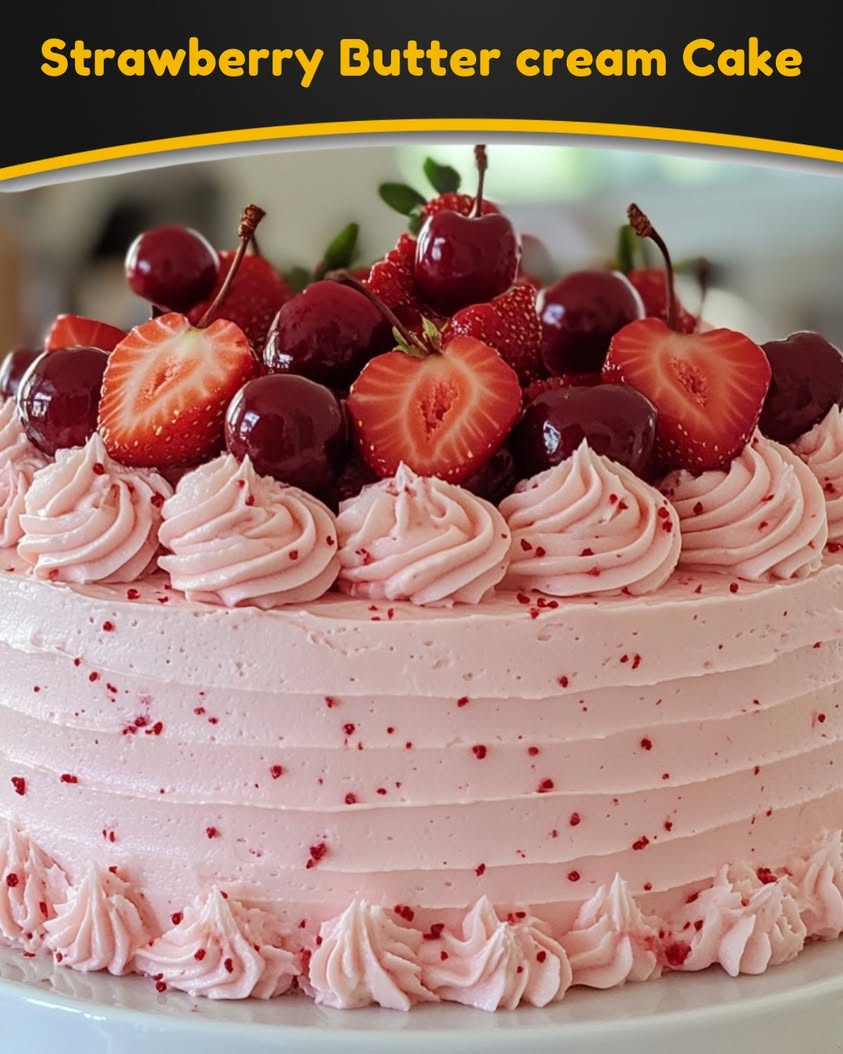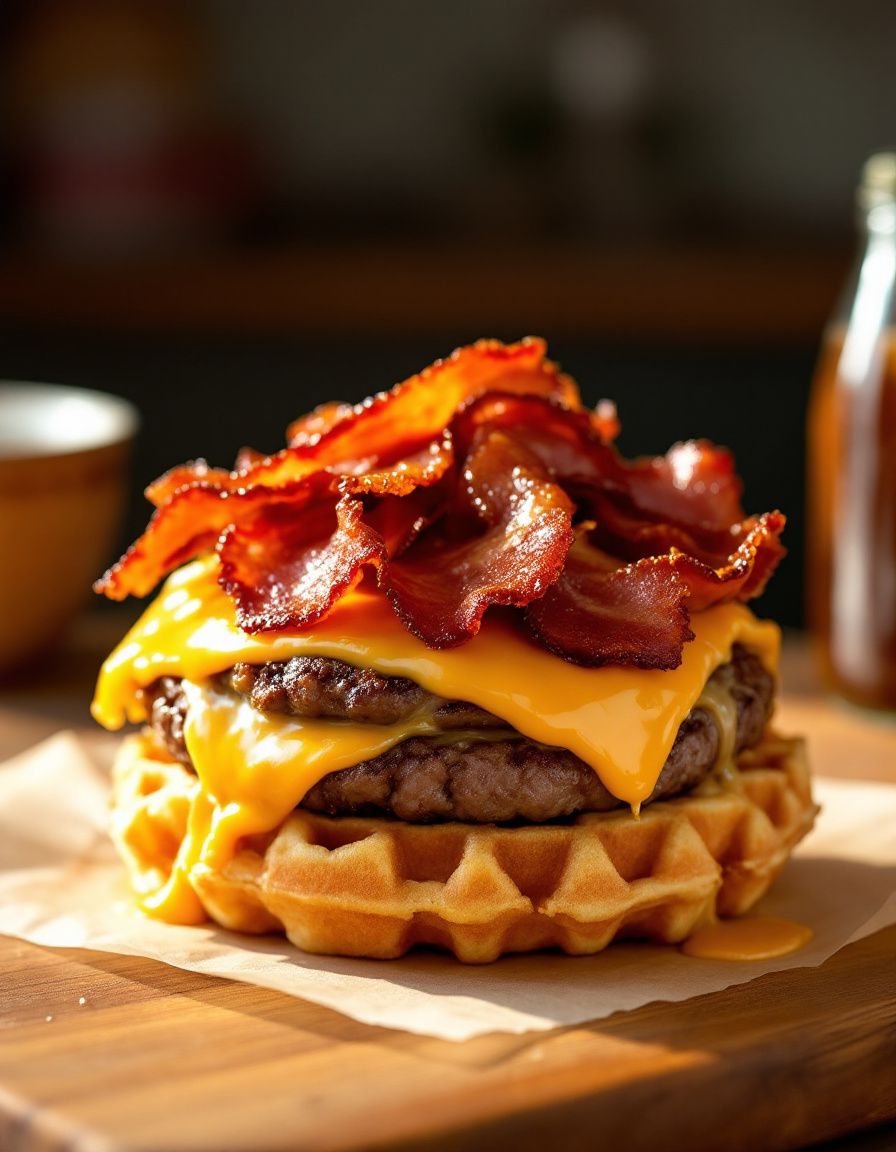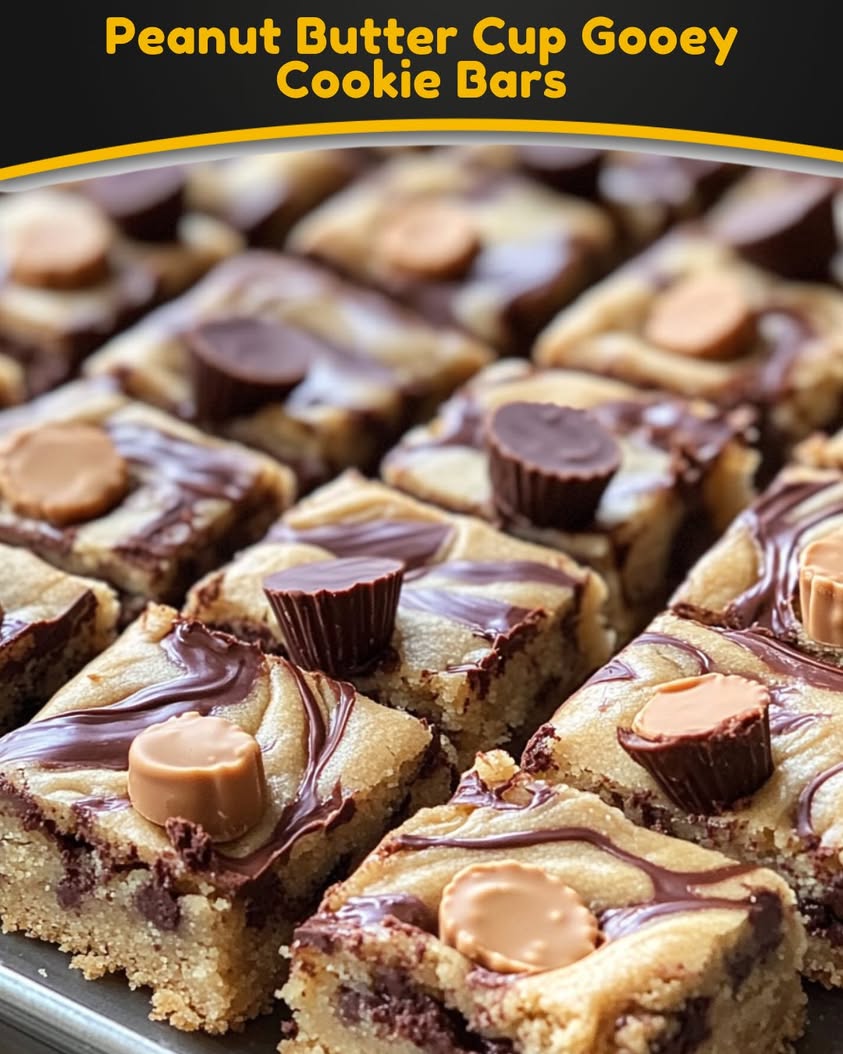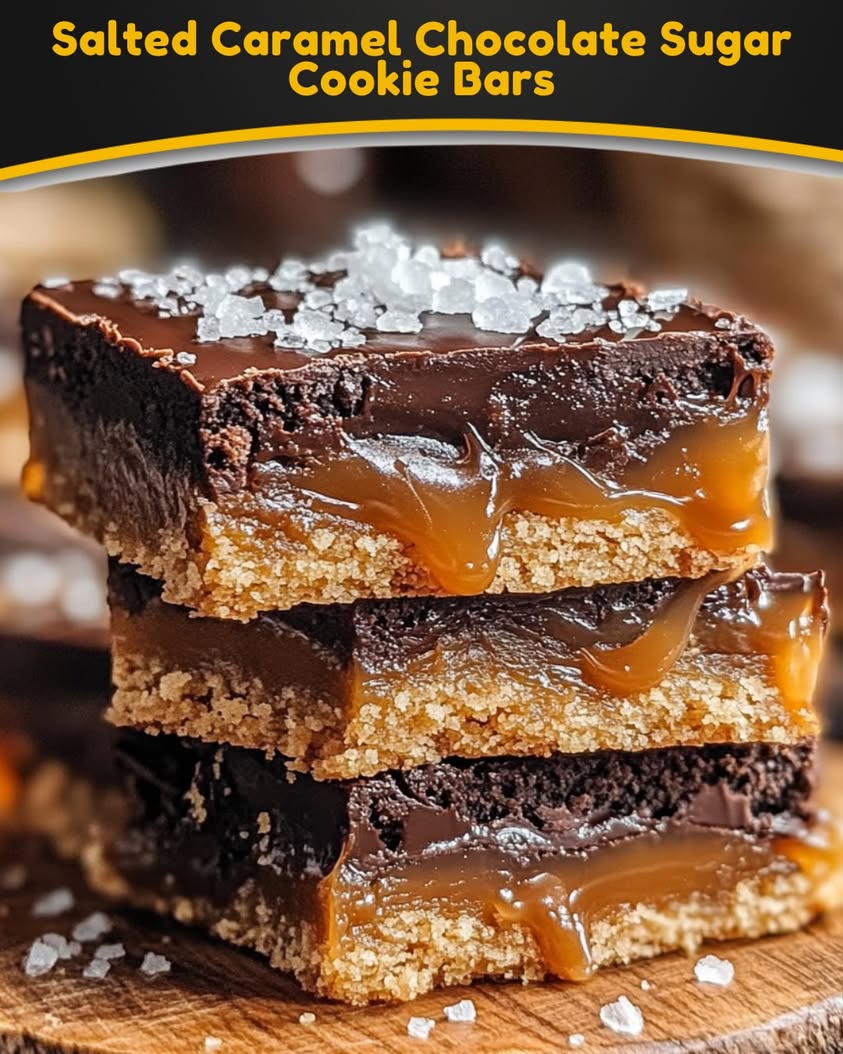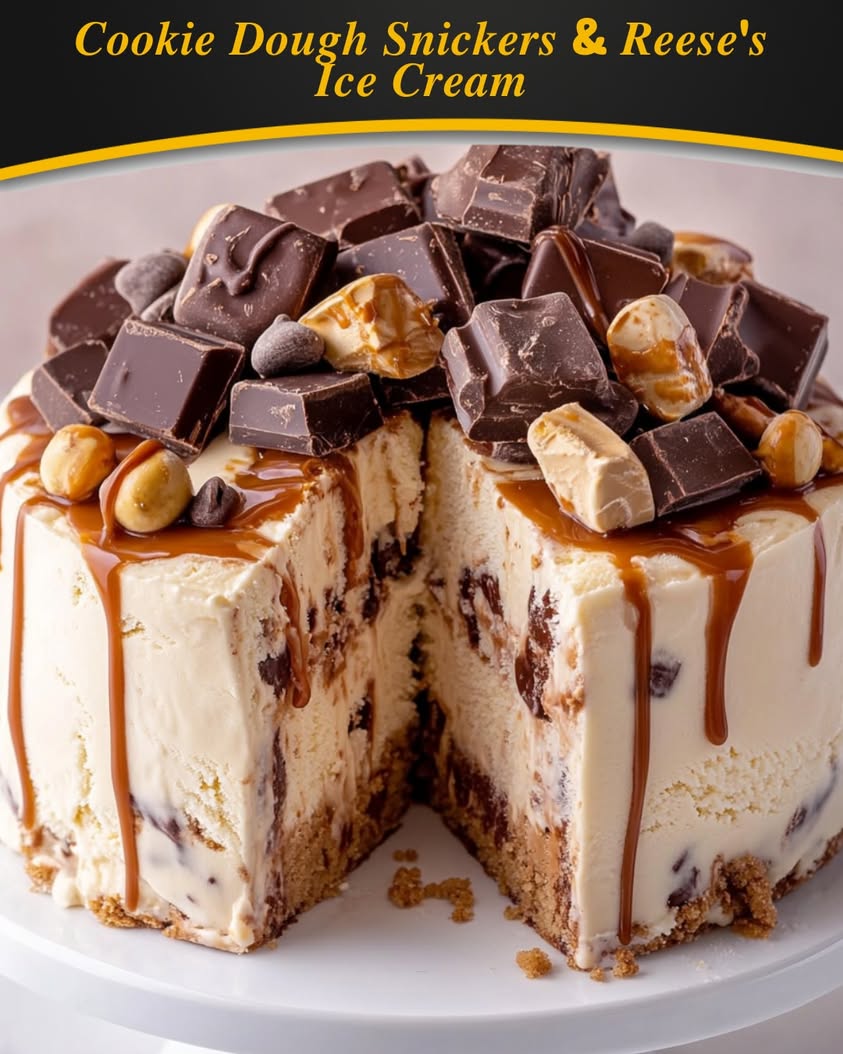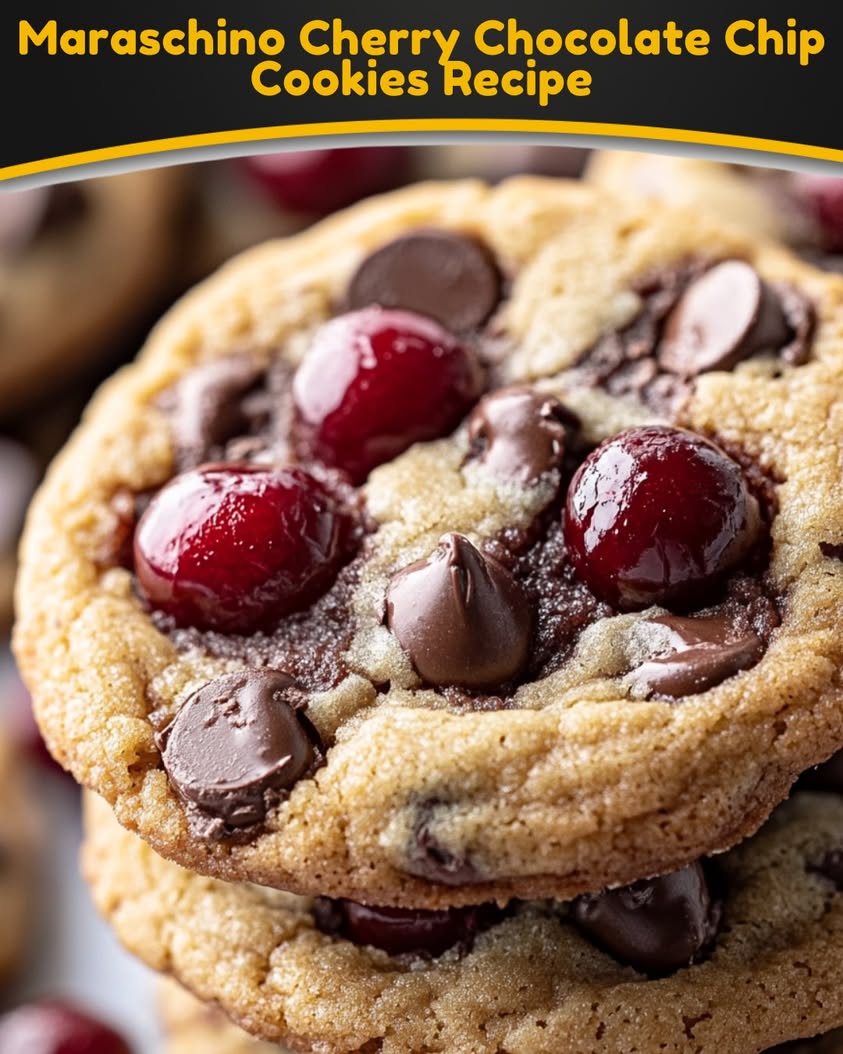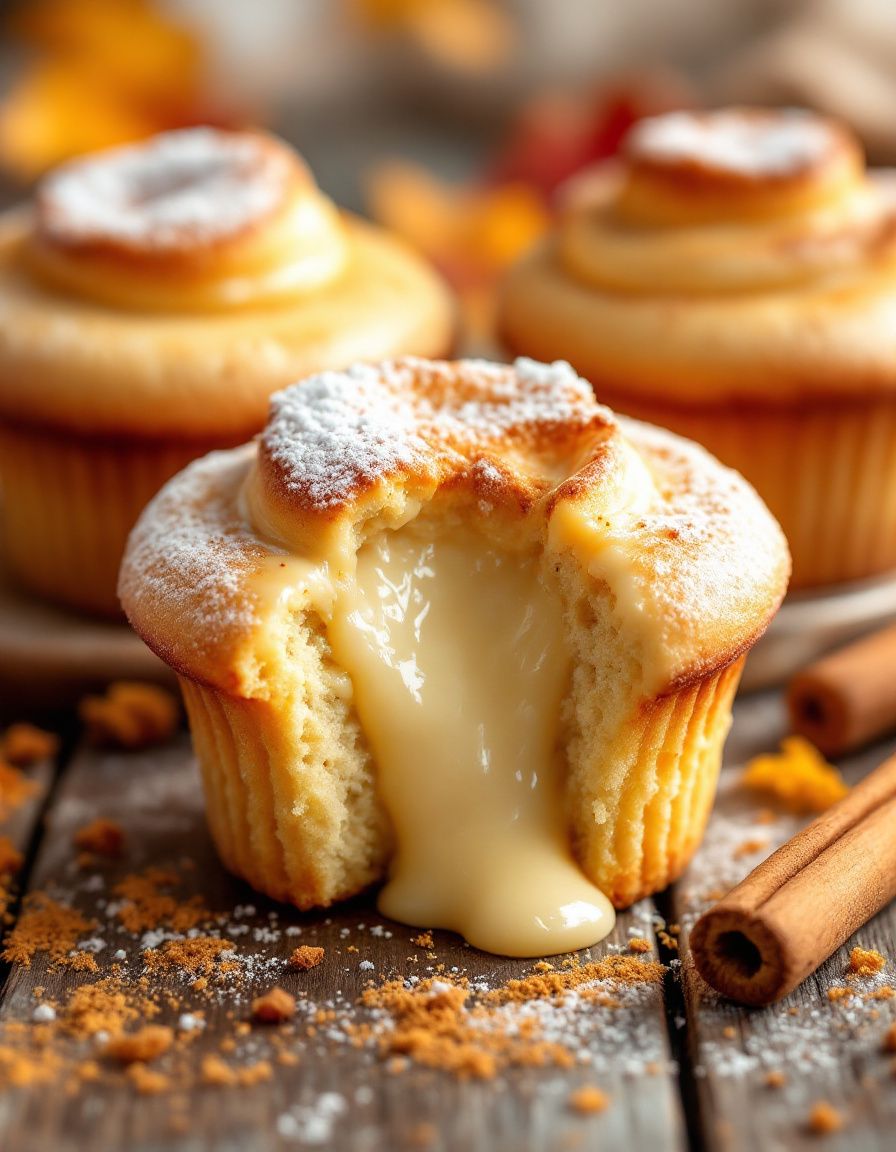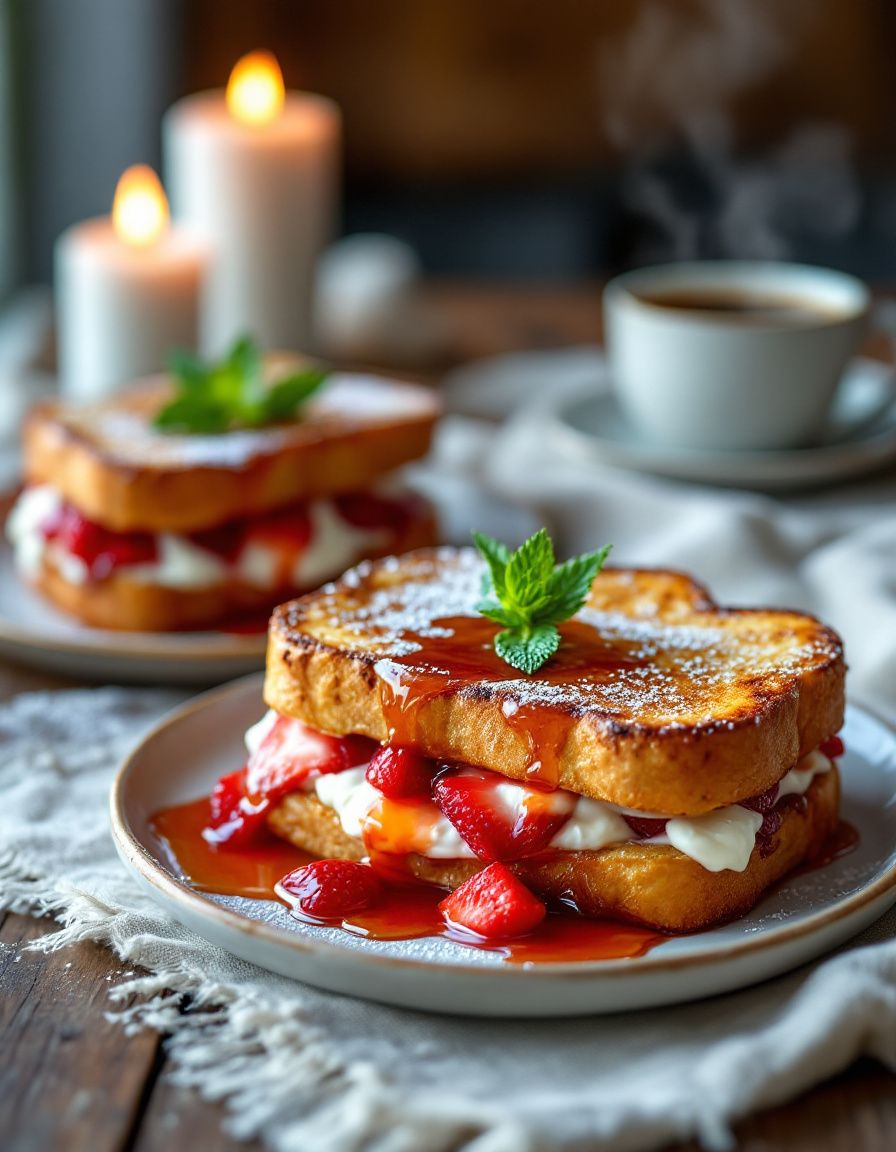Strawberry Buttercream Cake: A Delightfully Sweet Treat
Looking for a dessert that seamlessly combines the sweetness of strawberries with the rich flavor of buttercream? Look no further than this Strawberry Buttercream Cake! This delightful cake layers fluffy vanilla sponge cake with a luscious strawberry buttercream, making it perfect for birthdays, anniversaries, or any celebration that calls for a special treat. Each bite is a heavenly experience – the creamy frosting perfectly complements the moist layers of cake, while fresh strawberries add a burst of flavor that makes this dessert unforgettable.
Let your taste buds dance with joy as you enjoy the perfect blend of textures and flavors. The lightness of the cake combined with the smooth, rich buttercream creates a delightful mouthfeel, making this Strawberry Buttercream Cake not just a dessert, but an indulgent experience. Whether you’re a seasoned baker or a novice in the kitchen, this recipe is designed to impress and satisfy anyone who takes a bite.
Quick Recipe Highlights
- Flavor Profile: This cake features a harmonious sweetness from both the strawberries and the cake, complemented by a creamy, buttery richness from the buttercream.
- Texture: The light sponge cake paired with fluffy buttercream creates a delightful contrast that melts in your mouth, enhancing the overall eating experience.
- Aroma: The inviting aroma of freshly baked vanilla cake and strawberries wafts through the air, creating anticipation and excitement.
- Visual Appeal: The vibrant pink hue of the buttercream and the fresh strawberries on top create a stunning centerpiece that grabs attention.
- Skill Level Needed: While this cake has some complexities, it is approachable for anyone with basic baking skills.
- Special Equipment: You’ll need a mixing bowl, electric mixer, cake pans, and pastry bags for decorating.
Recipe Overview
- Difficulty Level: Medium – While the steps involve baking and frosting, they are manageable for any home baker willing to invest time and care.
- Category: Dessert – This is a delicious cake suitable for a range of sweet occasions, whether served at a birthday party or as an afternoon treat.
- Cuisine: American – This cake represents a classic American dessert, often featuring in celebrations and family gatherings.
- Cost: Relatively low cost – With basic pantry staples and fresh strawberries, this dessert is both affordable and rewarding.
- Season: Spring and Summer – Fresh strawberries peak during these seasons, making them ideal for this cake when they’re most flavorful.
- Occasion: Perfect for birthdays, springtime picnics, or celebrating special moments with friends and family.
Why You’ll Love This Recipe
The Strawberry Buttercream Cake is a delightful treat that appeals to all ages. Its light, airy sponge cake pairs beautifully with the creamy buttercream, creating a perfect balance of flavors that makes each bite special. The sweetness of the strawberries is enhanced by the lush buttercream, making it irresistible.
This cake is also incredibly convenient to prepare. It doesn’t require any advanced baking techniques or specialized equipment, making it accessible to novice bakers. You can whip it up in a little over an hour and have a beautiful cake ready to impress your guests.
Additionally, strawberries provide not only sweetness but also nutritional benefits, contributing vitamins and antioxidants to your dessert. This means you can enjoy your cake guilt-free while treating yourself to a little bit of health.
The social aspect of serving this cake at gatherings is priceless. It brings people together, sparking joy and conversation. Everyone loves a slice of cake, and the strawberry flavor often evokes warm memories and happy moments.
Finally, the cost-effectiveness of this cake is a major plus. Using simple ingredients that you probably have at home, along with the affordability of strawberries during their peak season, makes this cake a delightful, budget-friendly dessert option.
Historical Background and Cultural Significance
The roots of the Strawberry Buttercream Cake can be traced back to American baking culture, where cakes have been an essential part of celebrations for generations. Cakes have been traditionally used in various ceremonies, marking milestones in life, and the Strawberry Buttercream variant stands out due to its delightful flavor profile and its use of fresh fruit.
Culturally, strawberries have held a symbolic meaning for many traditions, often representing abundance and warmth. Their bright color and sweet taste make them a favorite in dessert recipes, enhancing the celebratory feel of any event.
Over the years, recipes have evolved, incorporating different techniques and flavor combinations, but the essence of enjoying a beautifully layered cake remains. Many families have their unique takes on the Strawberry Buttercream Cake, often passed down through generations, preserving the family’s culinary legacy.
Regional variations of the Strawberry Buttercream Cake also exist. In some parts of the United States, bakers might substitute the strawberry buttercream with other fruit flavors depending on seasonal availability, making it a versatile recipe that adapts to local tastes and traditions.
Ingredient Deep Dive
1. Strawberries:
Strawberries are much loved for their sweet and tangy flavor. They are rich in vitamins, particularly vitamin C, which boosts the immune system. When selecting strawberries, look for firm, vibrant-colored berries with a fresh green cap. Store them in the fridge to prolong freshness, and use them within a few days for the best flavor. If fresh strawberries aren’t available, you can also use frozen strawberries; just ensure they are thawed and drained properly.
2. Butter:
Butter is a crucial ingredient that brings richness and flavor to the cake. It also adds moisture, creating a tender crumb. Always choose high-quality unsalted butter for baking as it allows you to control the saltiness of your recipe. Butter should be at room temperature for improved incorporation into the batter. For storage, keep butter in the fridge, and you can freeze it for up to six months. Substitutions include margarine or non-dairy butter for lactose-intolerant individuals.
3. All-Purpose Flour:
This staple ingredient is responsible for the cake’s structure. Choose a fine-milled flour for a lighter texture. Flour should be stored in an airtight container in a cool, dry place for freshness. If you require a gluten-free option, consider using almond flour or a gluten-free flour mix tailored for baking.
4. Eggs:
Eggs add richness and moisture to the cake, and they help in leavening as well. When selecting eggs, look for fresh eggs from reputable sources. They can be stored in the refrigerator and have a long shelf life. For egg substitutes, you can use flaxseed meal or commercial egg replacers for vegan options, though the texture might slightly change.
Common Mistakes to Avoid
- Not measuring ingredients accurately can lead to a dense or dry cake. Use a digital scale or measuring cups for precision.
- Overmixing the batter will incorporate too much air, resulting in a tough texture. Mix just until the ingredients are combined.
- Baking at the wrong temperature can affect the rise and texture. Always preheat your oven before placing the cake inside.
- Not allowing the cake layers to cool before frosting can result in melted buttercream and a mess.
- Using cold ingredients can result in poor emulsification. Remember to let eggs and butter sit at room temperature.
- Skipping the use of parchment paper may cause sticking. Line your pans for easy removal.
- Using low-quality butter can alter the flavor. Invest in good quality for the best results.
- Not leveling cake layers can lead to a lopsided cake. Use a serrated knife to ensure they are even.
- Forgetting to wipe your mixing bowls clean after incorporating butter can lead to residual fat that alters the frosting texture.
- Underestimating the importance of chilling the decorated cake can cause the buttercream to melt or smudge during transport.
Essential Techniques
1. **Creaming Butter and Sugar**: This technique is crucial for achieving a light, fluffy texture in your cake. By incorporating air into the butter, you create a structure that helps the cake rise. Master this by gradually adding sugar to room temperature butter and beating until pale and fluffy, about 3-5 minutes. A common pitfall is not creaming long enough; watch for the mixture to turn light and visibly increase in volume.
2. **Folding in Dry Ingredients**: When incorporating flour and other dry ingredients, it’s essential to fold gently to avoid deflating the batter. Use a spatula and a gentle up-and-over motion to combine without losing the volume. The aim is to maintain the air trapped during creaming, so be cautious of mixing too hard. Visual cues for success include a batter that’s just combined with some streaks of flour remaining – it will finish mixing in the oven.
3. **Whipping Egg Whites**: Whipping egg whites is key to adding volume and lightness to certain cake recipes. Ensure the bowl and beater are clean and dry, as any fat can prevent whites from whipping up properly. Beat until stiff peaks form; this means the whites stand tall rather than drooping. A common mistake is over-whipping, which can result in dry and grainy egg whites. Stop when they hold their shape perfectly.
4. **Making Buttercream**: A classic buttercream is created by beating room temperature butter until smooth and creamy before gradually adding powdered sugar. To avoid graininess, sift the sugar and add milk or cream to achieve the desired consistency. Common pitfalls include incorporating too much sugar too quickly or using cold butter, which won’t mix properly. The buttercream should be light and spreadable; if it looks too thick, add a splash of milk.
Pro Tips for Perfect Strawberry Buttercream Cake
1. Use fresh, in-season strawberries for the best flavor. They should be ripe and sweet, enhancing the overall taste of the cake.
2. Chill your frosting before applying it to the cake, as this helps to stabilize it and makes it easier to work with.
3. Level your cake layers using a serrated knife to ensure even frosting and stacking.
4. Experiment with different flavor extracts (like vanilla or almond) in your buttercream to elevate the overall flavor profile.
5. Allow the cake to sit for a few hours before serving. This lets the flavors meld beautifully while keeping it moist.
6. Decorate with extra strawberry slices and sprigs of mint for a beautiful presentation and added flavor.
7. Make sure your butter is at room temperature to achieve the best consistency for both the cake and frosting.
8. If you notice your cake doming upwards, gently press down while it cools to help maintain even layers.
Variations and Adaptations
You can add a twist to the basic Strawberry Buttercream Cake by experimenting with various flavors. For example, consider incorporating lemon zest in the batter for a refreshing citrus kick. Different berry combinations—like raspberries or blueberries—can also provide a delightful alternative to strawberries.
When it comes to seasonal adaptations, utilizing pumpkin puree in the winter can create a rich, spiced version of the cake. This makes it perfect for holiday gatherings. Dietary modifications, like using coconut cream in the buttercream, can cater to vegan needs without sacrificing flavor.
For a fun texture variation, consider adding crushed nuts, such as almonds or walnuts, to the batter for contrasting bites and added crunch. Presentation alternatives, such as making mini cakes or cupcakes, can provide a beautiful array of desserts suitable for a buffet or celebration.
Serving and Presentation Guide
When serving this Strawberry Buttercream Cake, consider adding a layer of sliced strawberries in between the cake layers for added flavor and visual appeal. A simple yet effective plating technique involves presenting each slice on a decorative plate alongside a dollop of whipped cream or a scoop of vanilla ice cream.
For garnish, consider sprinkling fresh mint leaves or edible flowers to enhance its aesthetics. If serving at an event, aim for a tiered display, showcasing the cake’s height and layered beauty. It’s also vital to consider serving temperatures; the cake is best enjoyed at room temperature, which enhances its flavor profile.
Portion control is important – cut even, manageable slices to ensure your guests enjoy the dessert without overwhelming portions. Consider providing cake forks for aesthetic appeal while enhancing the overall dessert experience.
Wine and Beverage Pairing
For the ultimate pairing experience, consider a glass of sparkling wine, such as Prosecco or Champagne. The effervescence cuts through the richness of the cake while complementing the sweetness of the strawberries beautifully.
If you’re looking for non-alcoholic alternatives, a refreshing lemonade or iced tea works well, providing a citrusy balance to the dessert. For a warm accompaniment, herbal teas like chamomile or mint can enhance the cake experience without overpowering it.
Temperature considerations are essential; serve the wine chilled and the cake at room temperature for the best flavor experience. This balance ensures a pleasant pairing that enhances both the cake and your beverage of choice.
Storage and Shelf Life
To ensure your Strawberry Buttercream Cake stays fresh, store it in an airtight container in the refrigerator. Properly stored, it can last up to three days, though it’s best enjoyed fresh. If it’s decorated with buttercream, expect a slight firming in texture as it cools.
If you wish to extend shelf life, you can freeze the cake. Wrap it tightly in plastic wrap and then in aluminum foil. This keeps the cake fresh for up to three months. To serve, allow it to thaw in the refrigerator overnight before letting it come to room temperature.
Signs of spoilage include discoloration or an off smell, signaling that it’s best to dispose of the cake. Reheating is not recommended for this dessert, as it can compromise both taste and texture.
Make Ahead Strategies
To streamline your baking process, consider preparing the cake layers and buttercream a day in advance. Bake the layers, allow them to cool, and wrap them tightly in plastic wrap. Store them in the fridge until you’re ready to frost them.
The buttercream can also be made ahead and stored in an airtight container. When it’s time to decorate, re-whip the buttercream for a few minutes to restore its fluffy texture. This allows you to assemble the cake quickly without compromising quality.
Fresh element additions, like strawberries, should be added just before serving. This ensures they maintain their freshness and visual appeal. If you’re assembling the cake in advance, consider placing parchment between the layers to prevent sticking and preserve appearance.
Scaling Instructions
When halving the Strawberry Buttercream Cake recipe, scale down the ingredients accordingly, and use smaller cake pans to ensure even baking. Baking times can slightly decrease, so monitor your cakes as they bake.
For doubling or tripling the recipe, use larger mixing bowls and pans to accommodate the additional batter. Adjust your baking times as needed; cakes may take longer to bake, so be sure to check with a toothpick for doneness.
Make sure to scale your frosting ingredients to maintain balanced ratios for the best flavor and texture. Consider the size of your equipment, as larger quantities may require multiple baking sessions, especially if using smaller pans.
Nutritional Deep Dive
In every slice of Strawberry Buttercream Cake, you’ll enjoy a delightful balance of macronutrients. The cake provides carbohydrates from the sugar and flour while fats come primarily from the butter, creating a rich, satisfying dessert.
Micronutritionally, strawberries add valuable vitamins such as vitamin C and potassium, complementing the cake’s overall nutrient profile. This fruit elevates the dessert’s health benefits compared to other sugary treats.
However, due to the sugars and fats involved, portion control is key for weight management. Enjoy a moderate slice to satisfy your sweet tooth without excessive indulgence. Offering a fruit-rich dessert like this aligns well with health-conscious choices, balancing treat with nutrition.
Dietary Adaptations
To adapt this Strawberry Buttercream Cake for gluten-free diets, consider using a gluten-free all-purpose flour blend. This allows individuals with gluten sensitivities to enjoy this delightful dessert without concern.
For dairy-free options, substitute butter with coconut oil or a plant-based butter alternative. Use non-dairy milk and dairy-free cream cheese for the buttercream to maintain rich flavors while accommodating dietary restrictions.
Vegan adaptations can easily replace eggs with flaxseed meal or chia seeds mixed in water. This results in a surprisingly similar texture and flavor, keeping the cake inclusive for all.
Low-carb and keto variations may use almond flour instead of regular flour, and sugar substitutes like erythritol or stevia can help reduce the overall carbohydrate content significantly.
Troubleshooting Guide
If you encounter texture issues like a dense cake, ensure that you’re measuring flour accurately and not overmixing the batter. A light and airy cake should be the ultimate goal.
Flavor balance problems can arise if you’re using low-quality ingredients. Always use fresh, high-quality butter and sugar to enhance the overall taste. Additionally, adding a pinch of salt can elevate sweetness.
Temperature problems often stem from an uncalibrated oven. Ensure your oven is properly preheated, and use an oven thermometer to confirm accurate baking temperatures. If the cake is browning too quickly, tent it with foil.
For equipment challenges, familiarize yourself with your mixer to understand its power. Know when it’s ready to whip and incorporate ingredients so you can achieve the right texture without mishaps.
If ingredient substitutions affect the outcome, keep a close eye on texture and taste. It’s essential to be adaptable and willing to adjust based on what you have available in your pantry.
Recipe Success Stories
Many bakers have shared their delightful experiences with the Strawberry Buttercream Cake, highlighting how well it turned out for various celebrations. This cake has proven to be a crowd-pleaser, with families serving it for birthdays, picnics, and holiday gatherings.
Readers often express their excitement when they adapt the recipe, noting how versatile it is for different fruit variations. Success stories from those who have made it gluten-free or dairy-free demonstrate the cake’s accessibility to everyone in their families.
Photography submissions show not only successful cake layers but also imaginative presentations, showcasing how creativity can elevate the standard cake recipe. Sharing these experiences strengthens the community around this beloved dessert.
Adaptation stories frequently inspire other readers, with new flavor combinations or ingredient swaps. These success stories often highlight the joy this simple recipe brings, encouraging even novice bakers to give it a try.
Frequently Asked Questions
Yes, frozen strawberries can be used, but ensure they are fully thawed and drained to avoid excess moisture that can affect the consistency of the buttercream.
2. How should I store leftover cake?
Store leftover cake in an airtight container in the refrigerator for up to three days. It’s best served at room temperature.
3. Can I make this cake ahead of time?
Yes, the cake layers can be baked and wrapped in plastic wrap a day in advance. Prepare the buttercream the day of decorating for the best texture.
4. What can I use if I don’t have butter on hand?
You can substitute butter with coconut oil or margarine, maintaining similar ratios, though the flavor may vary slightly.
5. How do I achieve a fluffy buttercream?
Make sure your butter is room temperature before creaming, and gradually add powdered sugar. Whip for a few minutes until light and fluffy.
6. Is there a vegan alternative for this recipe?
Yes! Use plant-based butter and replace eggs with flaxseed meal mixed with water. You can also use almond or coconut milk in the batter.
7. Can I freeze the cake?
Yes! Wrap the cooled cake tightly in plastic wrap and aluminum foil, and freeze for up to three months.
8. How can I make the cake less sweet?
Try reducing the sugar in the cake and buttercream by a third or adding a pinch of salt to balance the flavors.
9. What flavor variations can I try?
You can experiment with other fruit flavors, like raspberry or lemon, by substituting berries or adding citrus zest.
10. Can I make mini versions of this cake?
Absolutely! Use smaller cake pans to create individual servings, adjusting the baking time appropriately.
Additional Resources
To further enhance your baking skills, explore related recipes that pair beautifully with your Strawberry Buttercream Cake, such as lemon curd tarts or refreshing fruit salads. Technique guides on mastering cake decoration can also serve you well as you wow your guests with your presentation skills.
Learn more about your ingredients, their origins, and uses in baking. Familiarize yourself with recommendations for cake pans and mixers that elevate the baking experience, ensuring your success each time.
Additionally, consider exploring seasonal variations that incorporate fresh produce as they become available, allowing your recipes to change with the seasons while maintaining a delicious flavor.
Join the Conversation
We invite you to share your Strawberry Buttercream Cake experiences on social media! Snap a photo of your beautiful creation and use the hashtag #StrawberryButtercreamCake. Engage with our community by sharing tips, tricks, and modifications that you’ve enjoyed.
Posting recipe reviews and feedback not only helps improve the recipe but also inspires others to try their hand at it. Let’s build a community where food lovers can suggest ideas and share their success stories, creating a network of culinary creativity focused on delicious desserts.
The Recipe
Strawberry Buttercream Cake
Serves: 10
Prep Time: 30 mins
Cook Time: 30 mins
Total Time: 60 mins
Kitchen Equipment Needed
- Mixing bowl
- Electric mixer
- Cake pans
- Pastry bags for decorating
- Serrated knife for leveling
Ingredients
- 2 cups all-purpose flour
- 1 ½ cups granulated sugar
- ½ cup unsalted butter, softened
- 3 large eggs
- 1 cup whole milk
- 2 tsp baking powder
- ½ tsp salt
- 1 tsp vanilla extract
- 1 cup strawberries, pureed for buttercream
- 1 cup unsalted butter, softened for frosting
- 4 cups powdered sugar
Directions
- Preheat oven to 350°F (175°C). Grease and flour two 9-inch round cake pans.
- In a mixing bowl, cream together the butter and granulated sugar until light and fluffy.
- Add the eggs one at a time, mixing well after each addition. Stir in vanilla extract.
- In another bowl, combine flour, baking powder, and salt. Gradually add to the butter mixture, alternating with milk until well combined.
- Pour the batter evenly into the prepared pans and bake for 30 minutes, or until a toothpick comes out clean.
- Allow cakes to cool in pans for 10 minutes before transferring to a wire rack to cool completely.
- While the cakes cool, prepare the buttercream by creaming the softened butter, then gradually adding the powdered sugar and the strawberry puree until smooth and fluffy.
- Once cooled, level the cake layers if needed, and place one layer on a serving plate. Spread a layer of strawberry buttercream over it.
- Top with the second layer and frost the top and sides of the cake with remaining buttercream.
- Decorate with fresh strawberries on top, and chill the cake before serving.
Recipe Notes
- For added flavor, consider incorporating lemon zest into the batter.
- Optional: Add food coloring to the buttercream for a vibrant look.
- Store any leftover cake in an airtight container in the refrigerator.
